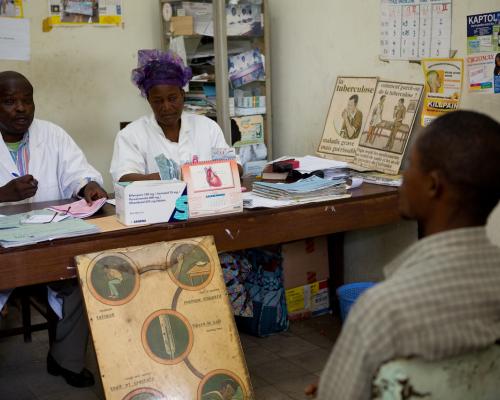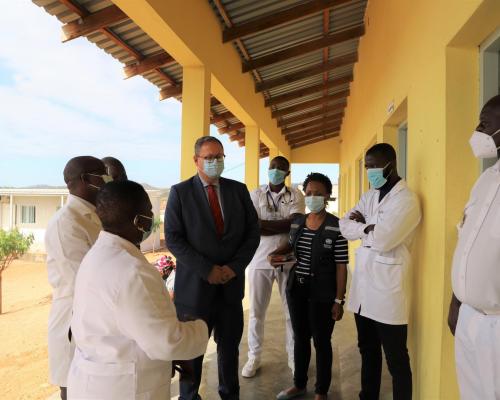Unspecific symptoms and signs such as headache, fever, weakness, joint pain, and lymphadenopathy appear. Over time, the parasites cross the blood–brain barrier to invade the central nervous system (second stage, meningoencephalitic), causing various neurological disturbances including sleep disorders (excessive daytime sleepiness, nocturnal insomnia), deep sensory disturbances, abnormal movements, tremor, ataxia, walking difficulties, speech difficulties, psychiatric disorders, seizures, coma and ultimately death. Most signs and symptoms are common to both stages, and sleep disorders in particular can appear already during the first stage.
Rhodesiense HAT is typically acute, progressing to second stage within a few weeks, and to death within 6 months. Gambiense HAT progresses slowly over around 3 years (highly variable).
An inoculation chancre (dermal reaction of 3–4 cm at the tsetse bite site) may appear 2–3 days after infection with rhodesiense HAT in up to 25% of local patients, but more frequently in patients from non-endemic regions. It is rare with gambiense HAT.
Sleeping sickness is diagnosed in several steps: after a clinical suspicion, serological tests (card agglutination trypanosomiasis test or HAT rapid diagnostic tests) can reinforce the suspicion, which should be confirmed by parasitological findings (in chancre exudate, lymphatic juice, blood, and cerebrospinal fluid). Unfortunately, the usual serological tests are only applicable to T. b. gambiense. Stage is determined by the number of white blood cells and the presence of trypanosomes in cerebrospinal fluid examination.


